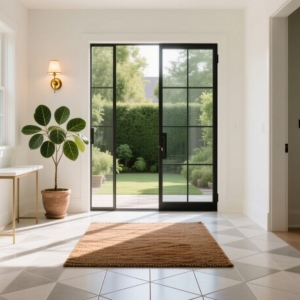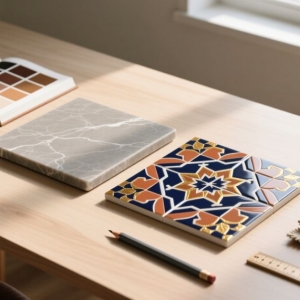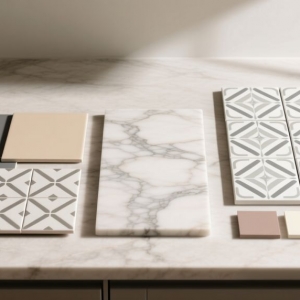Italian tiles are renowned for their style, strength, and artisanal quality, making them ideal for everything from home upgrades to commercial projects. But their premium price can strain budgets.
The bright side? You can secure Italian tiles without compromising quality or your wallet. Here’s how to shop smart.
1. Plan with Precision
Begin with a clear strategy. Measure your space accurately—verify twice. Consider:
- How many square feet are you tiling?
- Do you need extra for cuts, breakage, or spares?
- What tile type and size fits your project?
Misjudging quantities leads to overbuying or shortages. A detailed plan avoids these pitfalls.
Tip: Include a 10% buffer for cuts and reserves. For complex layouts, increase to 15%.
2. Understand Tile Grades
talian tiles are categorized by quality:
- Grade 1: Premium, no flaws, great for walls or light traffic.
- Grade 2: Minor blemishes, durable, perfect for busy floors.
- Grade 3: More imperfections, cheaper, suited for rustic or secondary areas.
Grade 2 tiles often balance quality and cost effectively. Check the PEI rating:
- PEI 1–2: Walls only.
- PEI 3: Light floors (e.g., bathrooms).
- PEI 4–5: Heavy-traffic areas (e.g., kitchens).
Choose based on function, not just aesthetics.
3. Explore Buying Options
You can source tiles from:
- Showrooms: Hands-on but pricier.
- Online stores: Affordable, wide variety, but images may vary.
- Direct importers: Cost-effective for bulk, but slower delivery.
Ask:
- Is this first- or second-grade tile?
- What’s the return process?
- Are there clearance or overstock options?
- What’s the shipping cost and delivery type?
Evaluate the full cost, not just the tile price.
4. Seek Overstock Deals
Surplus or discontinued tiles are often sold at deep discounts.
Ask your tiles supplier about:
- End-of-line stock.
- Leftovers from big projects.
- Usable tiles from damaged boxes.
Savings can be 20–50%, but stock is limited. Flexibility with design is key.
5. Blend Tiles Strategically
Using Italian tiles everywhere is costly. Instead:
- Feature Italian tiles in key areas like backsplashes, using ceramics elsewhere.
- Pair premium floor tiles with budget wall tiles.
- Use Italian tile accents like mosaics sparingly.
This maximizes impact affordably.
6. Select a Reliable Tiles Supplier
A good tiles supplier ensures quality. Choose one who:
- Clarifies tile grades and finishes.
- Sells authentic Italian tiles, not imitations.
- Resolves delivery issues quickly.
- Advises on installation and care.
Beware of suspiciously cheap deals—fakes are common. Trustworthy suppliers are open.
7. Account for Extras
Tiles are just one cost. Budget for:
- Adhesive and grout: Don’t skimp here.
- Shipping: Can be pricey for heavy tiles.
- Installation: Labor or DIY tools.
- Maintenance: Sealants or upkeep for some tiles.
Budget for the whole job.
8. Shop Seasonally
Tile prices peak in spring and summer. Winter often brings discounts.
To save:
- Shop off-season.
- Seek sales or contractor deals.
- Be flexible with delivery.
Ask about pallet discounts for large orders.
9. Choose Timeless Looks
Trends fade. For lasting value, pick:
- Neutral colors.
- Classic shapes like subway or herringbone.
- Durable finishes.
Use trendy tiles in small, changeable areas.
10. Talk to Your Installer
Before buying, consult your installer about:
- Tile suitability for your space.
- Layout issues.
- Special tools or adhesives.
- Waste estimates.
Their input prevents mistakes.
Conclusion: Smart Choices Save Money
Italian tiles are worth it when bought thoughtfully. Prioritize value, plan well, and shop wisely to get the look you want without breaking the bank.











